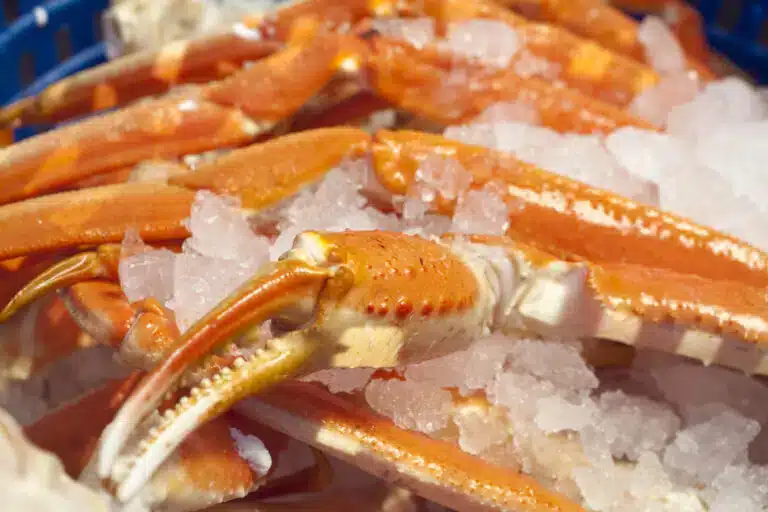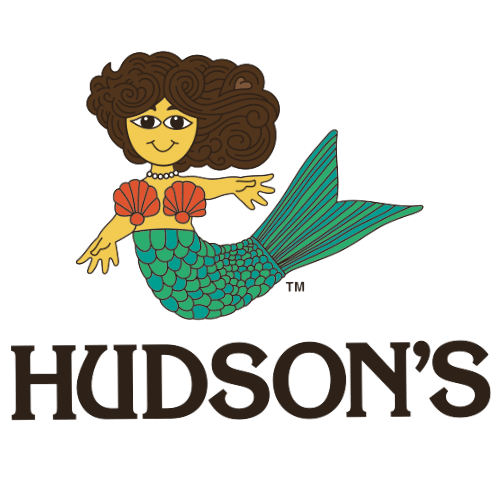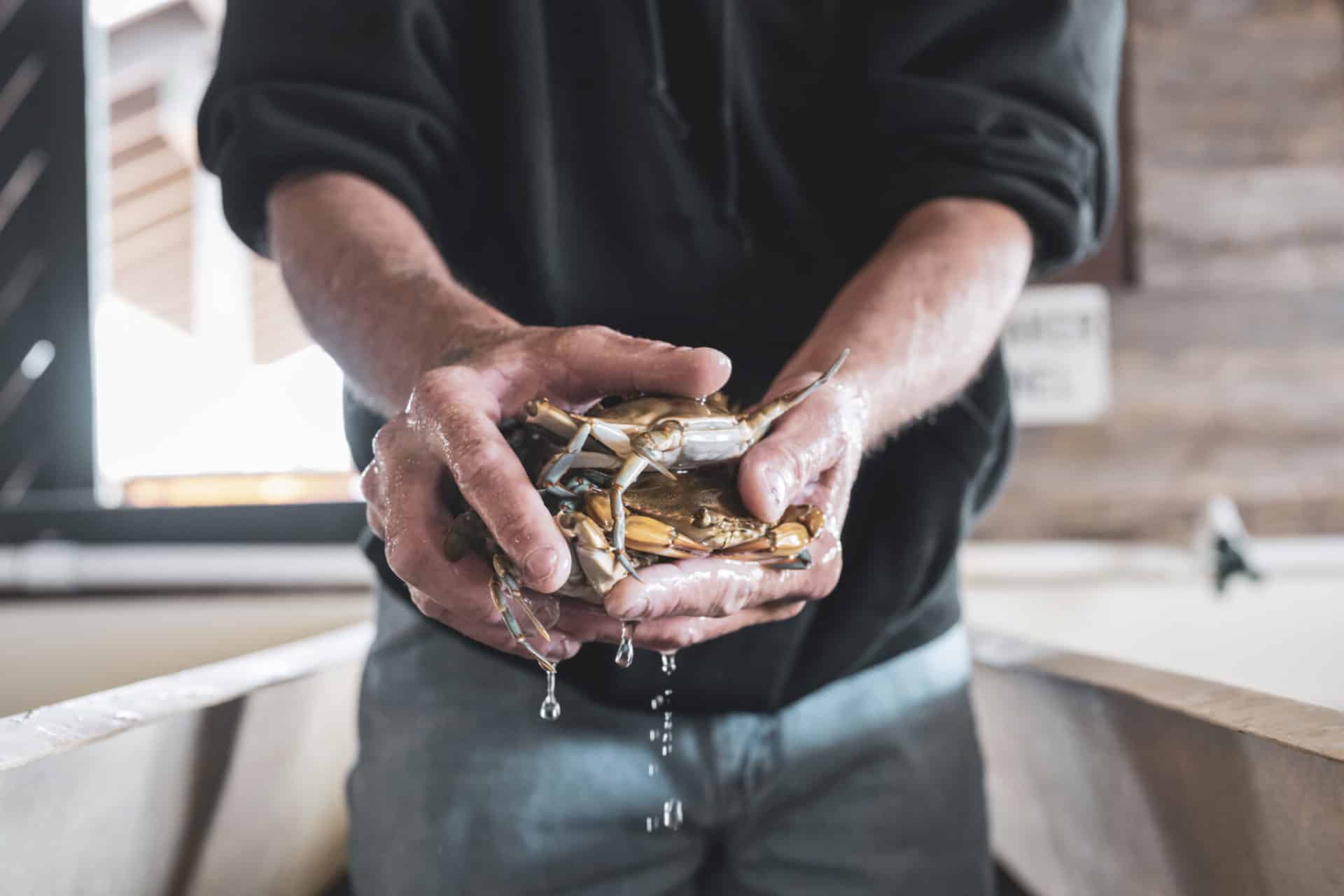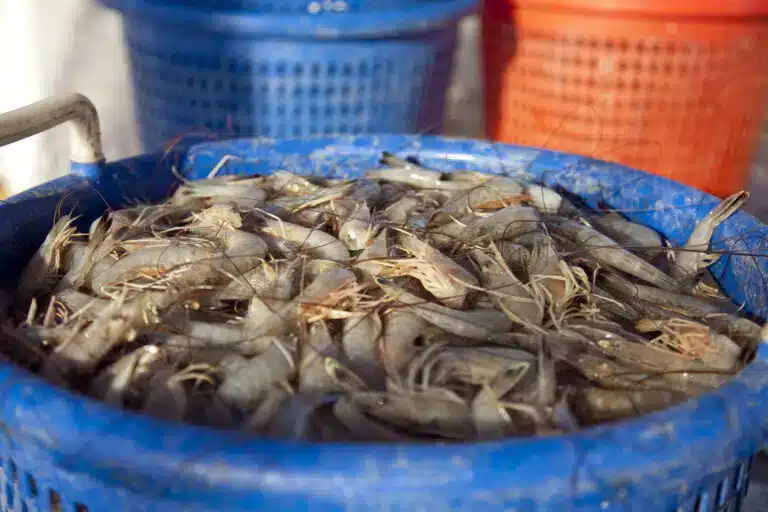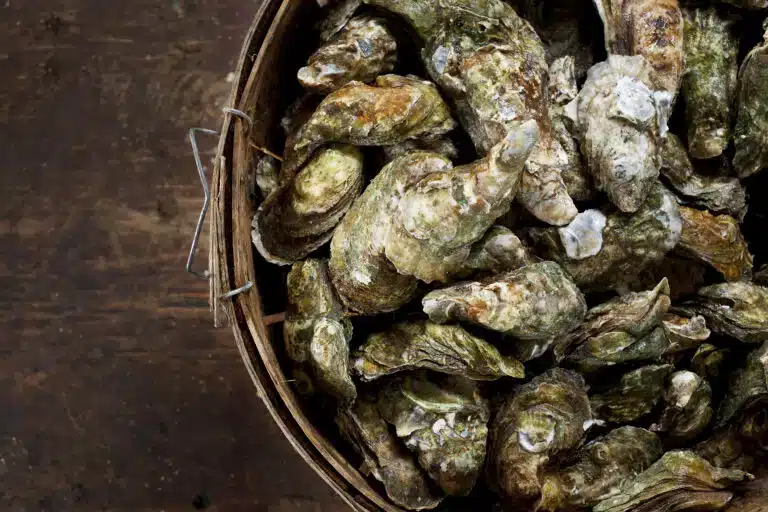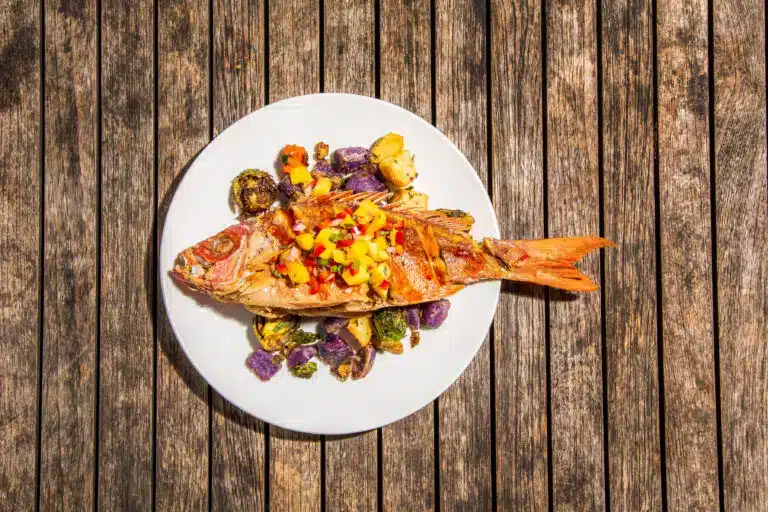Fresh Local Crab
Hudson’s on the Dock brings a truly special crab tasting experience unlike anywhere else on Hilton Head Island. Our local varieties include:
Soft-Shell Crab:
Every spring, when the water temperature rises, our local blue crab goes through a molting process and sheds its entire hard shell, leaving behind a soft body. The season lasts between four and five weeks depending on the weather and water temperature. The blue crab’s scientific name is Callinectes sapidus, which translates to “savory beautiful swimmer.” Soft shell crabs, also known as peelers, are popular because without the hard shell, you can enjoy the entire tender crab not just the claws. They are prized for their sweet, delicate flavor and tender meat. As the only restaurant on Hilton Head Island with an in-house shedding operation, we are able to have a softness and freshness to our soft shell crab dishes that are unrivaled.
We are in control of every step of the process. Melanie Padgett, (who basically grew up on the docks at Hudson’s. Her father Racine Padgett was one of our commercial shrimpers in the 70’s and 80’s) and her husband Jim, start by setting crab pots and using a male crab in the bait box as opposed to menhaden. The male crab puts off a musk attracting female crabs that are looking to breed. The females are voracious about breeding because they can actually preserve the sperm of the male crabs for multiple years. Melanie and Jim check the pots every other day and bring “hot” crabs to the restaurant. These crabs have tell-tale markings that tell us that they are close to molting, or shedding their shell. They bring these crabs to the restaurant and we begin the process of watching the crabs 24 hours a day until they shed their shells. This is made possible by the construction of a seawater system in which the crabs will be held until they molt. We also set crab pots with traditional bait to catch the male crabs that are molting. Guests at the restaurant can watch this process in the packing house and learn more about it. Read More about Hudson’s Soft-Shell Crab Process.
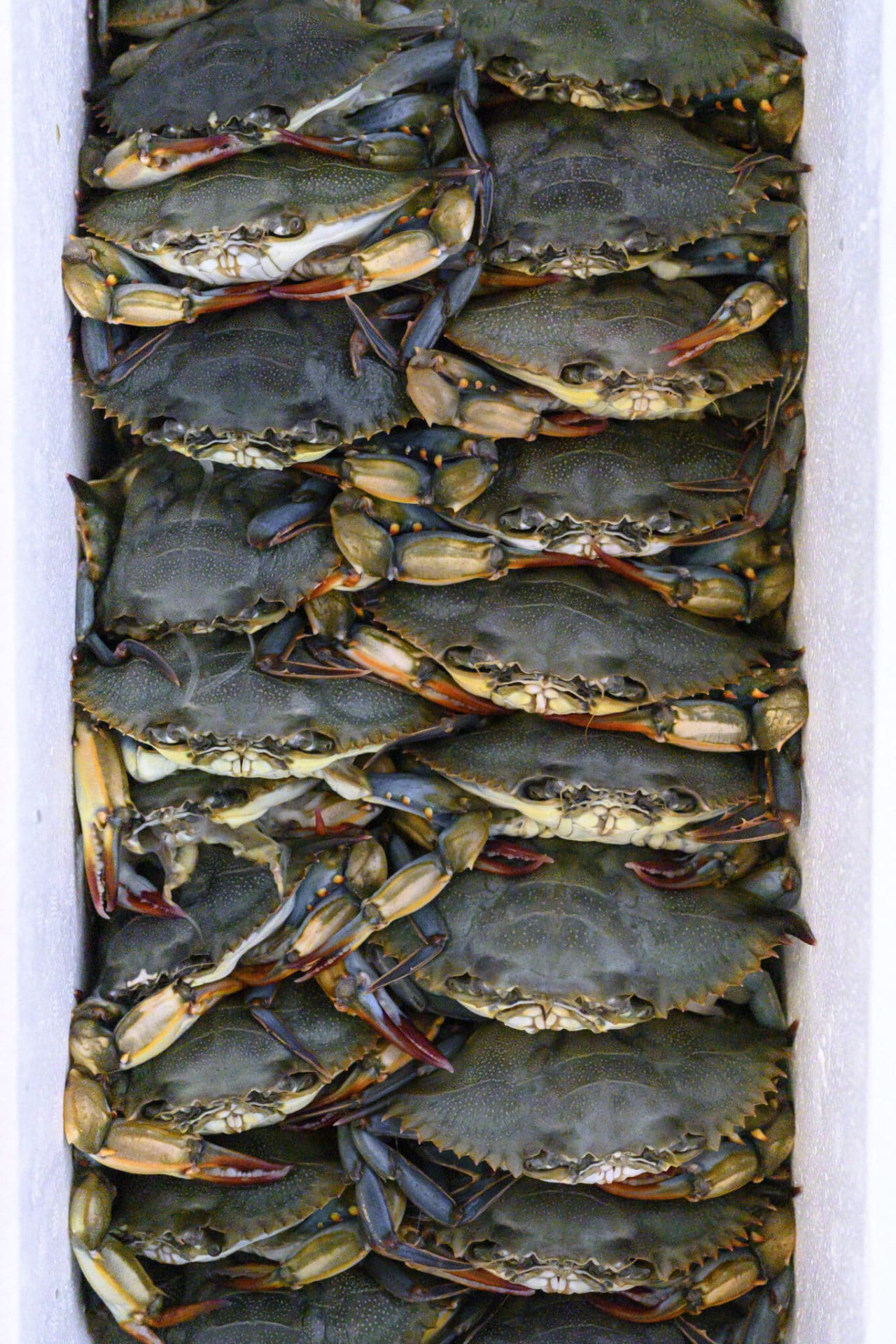
Stone Crab:
After the blue crabs (above) shed their shells in the spring, they seek refuge from predators in the tidal creeks, vacating the larger creeks, such as Skull Creek and Calibogue Sound. When they disappear, their slower moving and less aggressive cousin, the stone crab, migrates into the recently vacated areas. Melanie Padgett and her husband Jim are our Commercial Crab Fisherman. Melanie and Jim will set roughly 200 crab pots between Beaufort and Hilton Head to catch these sweet, heavily armored crabs. Stone crabs are unique in that Melanie and Jim only keep one claw and then release the crabs back into the wild. The crab lives to fight another day and will regenerate the claw that was removed. Many people don’t know that we have an abundance of stone crab claws in this part of the world. We do, and they are delicious. Stone crabs are most often served chilled, because if they are not blanched within a short time after harvest, the meat will not separate from the shell. Melanie will call us when she is close by and we will quickly blanch the claws within minutes of them being harvested. It is not uncommon for our more seasoned guests to await Melanie’s arrival at the dock prior to placing their order for the firm textured claws. Melanie brings about 300 pounds of claws to the restaurant each week in the spring, summer, and early fall.
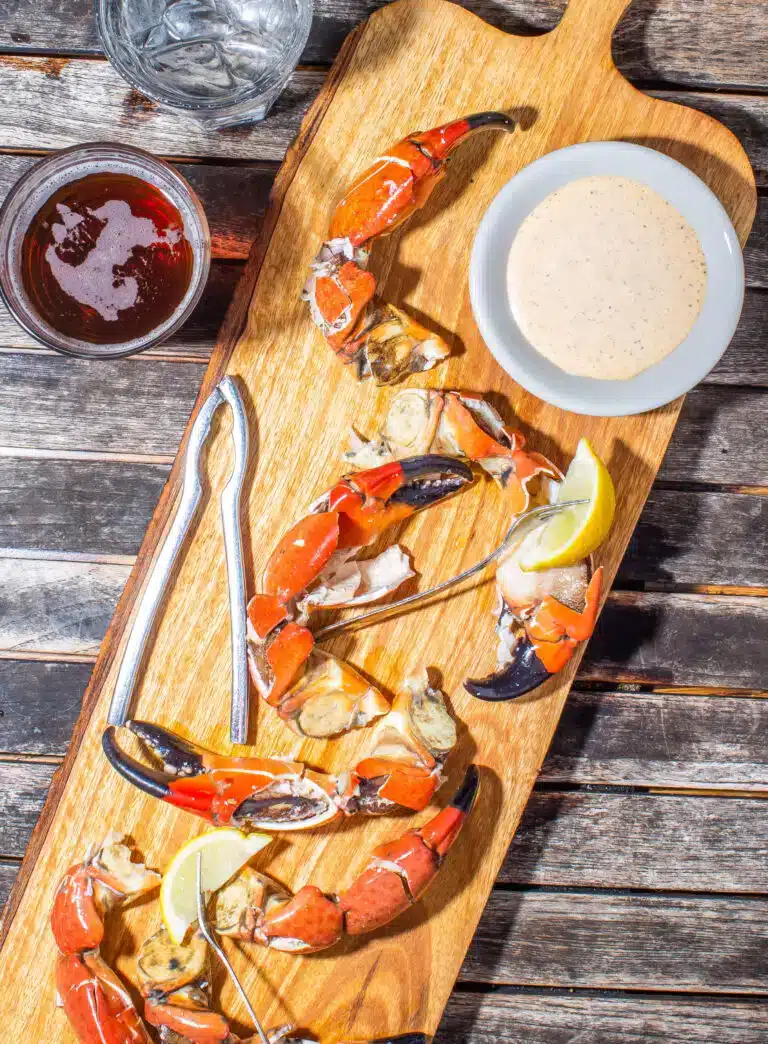
Blue Crab:
In the Lowcountry of South Carolina, the blue crab is valued above all. The sweet meat of the blue crab is favored by foodies over all other locally captured seafood. Available year round, the Blue crab will be at its prime and most abundant from May to August. Blue crab meat has a taste that is rich, sweet, succulent, and buttery.
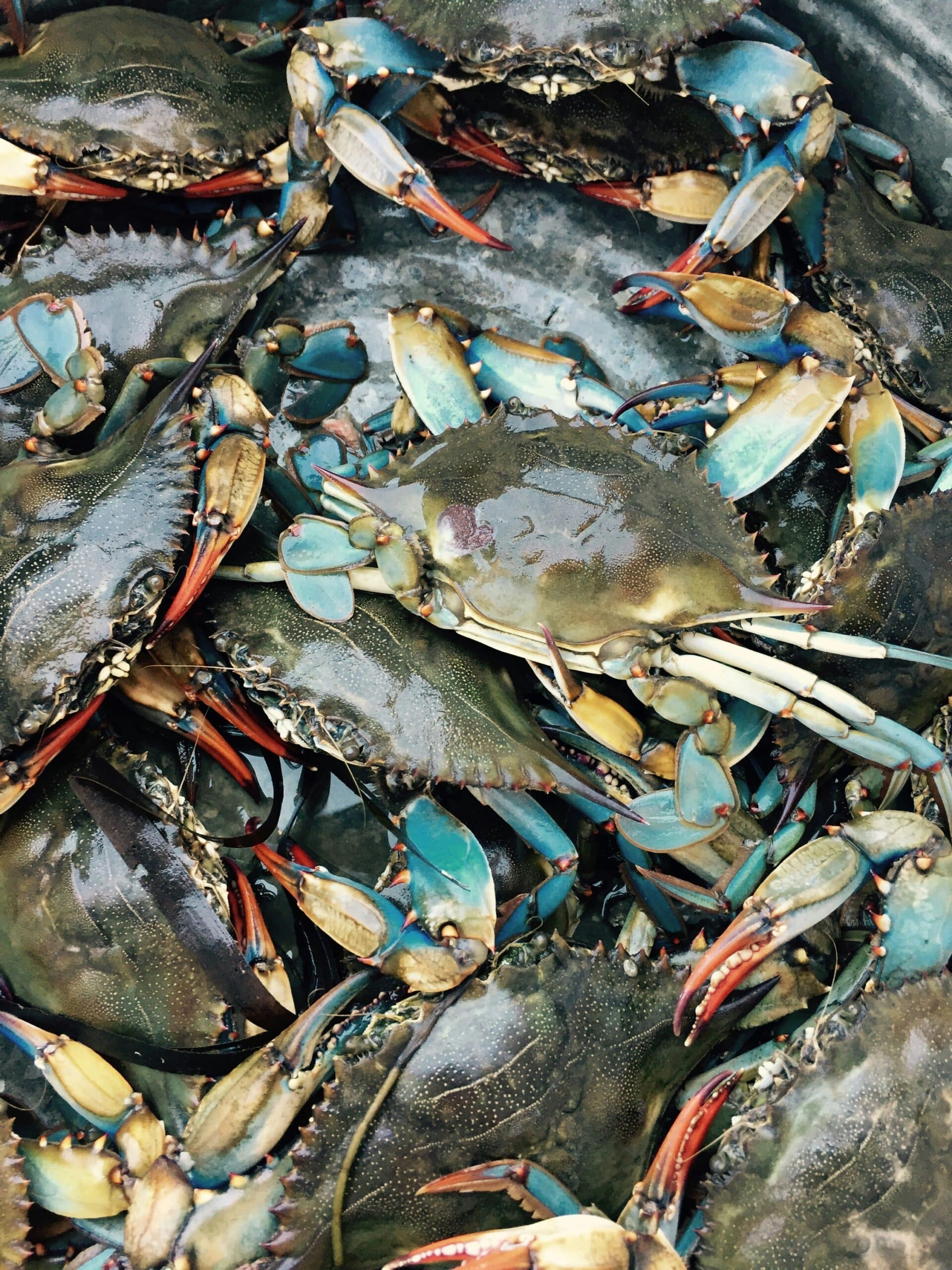
Snow Crab:
Snow crab, also known as queen crab, are found in the North Atlantic and North Pacific, preferring deep, cold-water conditions. Although found in snowy ocean environments, they get their name from the snow-white color of their meat. As their name suggests, they are closely related to the larger king crab. They have a sweet, slightly briny flavor and a firm texture.
